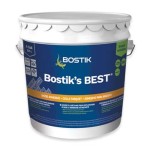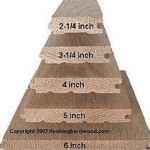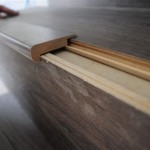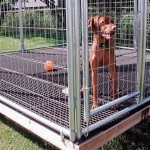Quarter Sawn White Oak Flooring in Ontario: A Comprehensive Guide
Quarter sawn white oak flooring has become a sought-after choice for homeowners and builders in Ontario, owing to its exceptional stability, distinctive grain patterns, and inherent durability. This article provides a comprehensive overview of quarter sawn white oak flooring, specifically focusing on its characteristics, benefits, installation considerations, and maintenance requirements within the context of the Ontario climate and market.
The term "quarter sawn" refers to a specific method of sawing lumber from a log. Unlike plain sawn lumber, where cuts are made horizontally across the log, quarter sawn lumber is produced by first quartering the log and then making cuts perpendicular to the growth rings. This process results in a board with a grain pattern that is predominantly vertical, offering enhanced dimensional stability and unique aesthetic appeal.
White oak, a species of hardwood native to North America, is prized for its density, strength, and resistance to moisture and decay. Its closed cellular structure makes it particularly well-suited for flooring applications, especially in environments subject to fluctuating humidity levels. In Ontario, where seasonal changes can significantly impact indoor humidity, the stability of white oak quarter sawn flooring is a notable advantage.
Understanding Quarter Sawn Lumber Production
The process of quarter sawing begins with dividing a log into quarters. Each quarter is then sawn so that the growth rings intersect the face of the board at an angle between 60 and 90 degrees. This sawing method yields a greater proportion of vertical grain compared to rift sawn lumber (which also has a primarily vertical grain but is cut differently) and drastically more than plain sawn lumber. The result is a product that is less prone to cupping, warping, and twisting, issues that are common with plain sawn lumber, particularly in environments where moisture content changes frequently.
The advantages of this sawing technique extend beyond dimensional stability. Quarter sawing also minimizes surface checking and splitting, resulting in a flooring product that maintains its integrity and appearance over time. Furthermore, the vertical grain pattern of quarter sawn white oak often exhibits medullary rays, also referred to as "flecks." These rays are cross-sectional views of cells that radiate outward from the center of the tree and contribute to the unique and highly desirable aesthetic of quarter sawn flooring. The prominence of these rays varies between individual boards, adding character and visual interest to the overall floor.
The production of quarter sawn lumber is more labor-intensive and generates more waste compared to plain sawn lumber. This increased production cost translates to a higher price point for quarter sawn flooring. However, the enhanced stability, durability, and aesthetic qualities often justify the investment for those seeking a long-lasting and visually appealing flooring solution.
Benefits of Quarter Sawn White Oak Flooring in Ontario
The selection of flooring material is a critical decision for any construction or renovation project. Quarter sawn white oak flooring offers a range of benefits that make it a particularly suitable choice for Ontario homes and commercial spaces.
First and foremost, its dimensional stability is a significant advantage. Ontario's climate is characterized by cold, dry winters and warm, humid summers. These seasonal fluctuations in humidity can cause wood flooring to expand and contract, leading to gaps, cupping, and even structural damage. Quarter sawn white oak, due to its vertical grain orientation, experiences significantly less movement in response to changes in humidity compared to plain sawn lumber. This inherent stability helps to maintain the integrity and appearance of the floor over the long term, minimizing the need for repairs or replacements.
Secondly, white oak is naturally resistant to moisture and decay. Its closed cellular structure makes it less susceptible to water absorption, which is a critical factor in areas prone to dampness or spills. This resistance is further enhanced by the presence of tyloses, cellular plugs that block the vessels in the wood, preventing water penetration. This inherent moisture resistance makes white oak a suitable choice for kitchens, bathrooms, and basements, where moisture exposure is more likely.
Thirdly, the aesthetic appeal of quarter sawn white oak is undeniable. The vertical grain pattern, often accentuated by medullary rays, creates a visually striking and sophisticated look. The unique character of each board adds depth and interest to the floor, making it a focal point of the room. The natural color variations within white oak, ranging from creamy whites to light browns, further enhance its aesthetic versatility, allowing it to complement a wide range of interior design styles.
Finally, quarter sawn white oak flooring is highly durable and long-lasting. White oak is a dense and strong hardwood that can withstand heavy foot traffic and resist dents and scratches. With proper installation and maintenance, a quarter sawn white oak floor can last for generations, making it a sustainable and cost-effective flooring solution in the long run.
Installation and Maintenance Considerations
Proper installation is crucial to maximizing the benefits of quarter sawn white oak flooring. It is recommended to engage experienced flooring professionals who are familiar with the unique characteristics of this material and the specific requirements of the Ontario climate.
Acclimation: Before installation, the flooring must be properly acclimated to the environment in which it will be installed. This involves allowing the flooring to adjust to the temperature and humidity levels of the room for a period of several days or weeks. This process helps to minimize expansion and contraction after installation, preventing warping or gapping.
Subfloor Preparation: A level and stable subfloor is essential for a successful installation. Any unevenness or imperfections in the subfloor must be addressed before the flooring is installed. This may involve sanding, leveling compounds, or the installation of an underlayment.
Installation Method: Quarter sawn white oak flooring can be installed using various methods, including nailing, gluing, or floating. The choice of installation method will depend on the specific subfloor conditions and the manufacturer's recommendations. Nailing is a common method for solid hardwood flooring, while gluing is often used for engineered quarter sawn flooring.
Finishing: After installation, the flooring should be finished with a protective coating to enhance its durability and resistance to wear. Various types of finishes are available, including polyurethane, varnish, and oil-based finishes. The choice of finish will depend on the desired aesthetic, level of durability, and maintenance requirements.
Maintenance: Regular maintenance is essential to preserving the beauty and longevity of quarter sawn white oak flooring. This includes regular sweeping or vacuuming to remove dirt and debris, as well as occasional damp mopping with a pH-neutral cleaner specifically designed for hardwood floors. Avoid using harsh chemicals or abrasive cleaners, as these can damage the finish and the wood itself.
Humidity Control: Maintaining consistent indoor humidity levels is crucial to preventing excessive expansion and contraction of the flooring. Using a humidifier during the dry winter months and a dehumidifier during the humid summer months can help to minimize moisture-related problems.
Protecting the Finish: Protecting the floor from scratches and dents is also important. Use felt pads under furniture legs, and avoid wearing shoes with sharp heels or cleats on the flooring. Place mats or rugs in high-traffic areas to protect the finish from wear and tear.
Addressing Ontario-Specific Challenges: Ontario's climate presents particular challenges for wood flooring. The combination of cold winters, humid summers, and varying indoor humidity levels requires careful planning and attention to detail. Selecting a high-quality quarter sawn white oak flooring product, ensuring proper acclimation and installation, and maintaining consistent indoor humidity levels are all essential steps in ensuring the long-term success of the flooring.
Sourcing Quarter Sawn White Oak Flooring in Ontario
In Ontario, sourcing quarter sawn white oak flooring involves considering various factors, including the supplier’s reputation, the quality of the lumber, and the availability of different grades and finishes. Several reputable flooring suppliers and manufacturers operate within the province, offering a wide range of quarter sawn white oak flooring options.
It is advisable to research different suppliers, compare prices, and request samples before making a purchase. Look for suppliers who can provide information about the origin of the lumber, the sawing methods used, and the quality control measures in place. A reputable supplier will be able to answer your questions and provide guidance on selecting the right flooring for your specific needs.
Consider the grade of the lumber. Quarter sawn white oak flooring is typically graded based on the presence of knots, imperfections, and color variations. Clear grade lumber, which has minimal imperfections, is the most expensive, while lower grades may have more knots and color variations. The choice of grade will depend on your aesthetic preferences and budget.
Explore different finish options. Quarter sawn white oak flooring can be finished with a variety of different coatings, each offering different levels of durability, sheen, and color. Consider the desired aesthetic and the level of maintenance required when selecting a finish. Oil-based finishes tend to highlight the natural grain and color of the wood, while polyurethane finishes offer greater durability and resistance to wear.
Consider Engineered Options: Engineered quarter sawn white oak flooring offers a stable and durable alternative to solid hardwood flooring. Engineered flooring consists of a thin layer of quarter sawn white oak veneer bonded to a multi-layered core. This construction makes it more resistant to moisture and expansion, making it a suitable choice for basements and other areas where moisture levels may be high.
By carefully considering these factors, homeowners and builders in Ontario can source high-quality quarter sawn white oak flooring that meets their specific needs and preferences. Engaging with knowledgeable suppliers and installers can help to ensure a successful flooring project that enhances the beauty and value of their property for years to come.

Quarter Rift Sawn Natural White Oak Flooring Gaylord

Quarter Rift Sawn White Oak Flooring Lombardy Agripharma It

Toronto Wide Plank White Oak Hardwood Flooring Gaylord

Logs End Rift Quarter Sawn White Oak

Quarter Sawn White Oak Site Stained And Finished

Quarter Rift Sawn White Oak Flooring Lombardy Agripharma It

Quarter Rift Sawn Natural White Oak Flooring Gaylord

Hand Sc White Oak Natural Vintage Hardwood Flooring And Engineered

Quarter Sawn White Oak Site Stained And Finished

Plank Hardwood Flooring Toronto Ontario Gaylord
Related Posts








